Ed Gorman's Blog, page 112
October 23, 2013
Order Nightmare Alley and Grindshow in beautiful collectors' editions now


Ed here: Continuing last night's post. Here's a piece I wrote about Nightmare Alley and Gresham in 2008. I spent three hours reading into Grindshow today and it's a dazzler. There is a dark desperation to a life overwhelmed by poverty and alcoholism when it searches into the occult and the supernatural aspects of carny life--as well as other venues. Gresham's great aggrieved search is a fascinating statement by a man who was both a poet, a journalist and a novelist.
Excerpted from Hardboiled Maryland:
William Lindsay Gresham
"Nightmare Alley belongs not to the hard-boiled world of Dashiell Hammett and James M. Cain, but to the dark and shadowy world of noir. As a literary term, noir can be applied to any work--especially one involving crime--that is notably dark, brooding, cynical, complex, and pessimistic. Nightmare Alley is certainly all that and more, described by one critic as "a tough, relentless, colorful novel that exposes the private world of the freaks in order to comment on a sick, degrading society." The novel depicts the rise of Stan Carlisle from a carnival mentalist to a successful "spiritualist," preying on the rich and gullible matrons of society, to his eventual fall and total disintegration.
"Gresham's depressed vision of society colored his private life as well; he was an alcoholic and an abusive husband to his wife Joy Davidman, as well as to their children. Joy eventually fled to England with their children, where she conducted a long-term love affair with the author C. S. Lewis, whom she eventually married (their story was recently told in the 1993 film Shadowlands). In 1962 Gresham committed suicide in a run-down hotel room in New York, where he had registered under the name "Asa Kimball, of Baltimore." The only tribute paid to him in the New York Times came from the bridge columnist."
Ed here: Whenever the subject of crime fiction as serious literature comes up the first novel I think of is Nightmare Alley. The book was of its time and Gresham was certainly influenced by the preceding generation of writers. In places you hear James T. Farrell, W.R. Burnett as well as one of his contemporaries, Nathaneal West. But ultimately Greshman was his own man and there is no novel quite like it in noir.
Unlike the writers I've mentioned, however, Gresham offered no hope. There are two kinds of people in the world, he seemed to believe, predators and victims. The book is marked by a mordant existential undertow that charts not only the downfall of Stanton Carlisle but also the few who care about him. The astrological references that shape the story and its thrust create an otherworldly tone as eerie as parts of the carnival itself.
There are many fine books about carnival life in American literature. Jim Tully's work comes to mind, for example. Ray Bradbury gave the carny world a fantastical twist. And Fredric Brown's The Fabulous Clipjoint which creates a kind of hardboiled lyricism for the desperate world it shows us.
But the nod goes to Gresham. A major novel and a true masterpiece.
POSTED BY ED GORMAN AT 2:43 PM 2 COMMENTS: LINKS TO THIS POST

Published on October 23, 2013 18:18
October 22, 2013
From Centipede Press Beautiful Collectors editions of William Lindsay Gresham
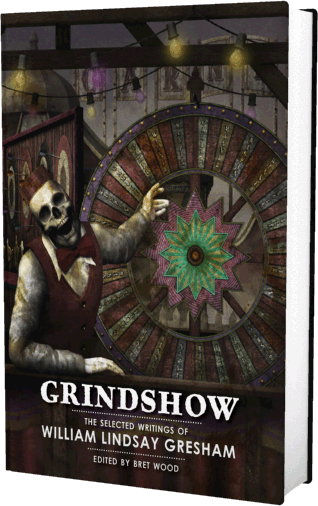
SYNOPSISIn the decades since its publication, William Lindsay Gresham’s novel Nightmare Alley (1946) has gained recognition as a cornerstone of postwar noir fiction. But the remainder of the author’s work — thematically diverse and voluminous in scale — has gone virtually unexplored.
Whether writing for the detective pulps of the 1940s, the sci-fi digests of the 1950s, or the lowbrow men’s magazines of the early 1960s, Gresham relentlessly indulged his fascination with crime, psychology, magic, and spiritism, investing each of these almost-forgotten pieces with his dark wit and fatalistic sense of doom. This is the first collection of William Lindsay Gresham’s ever to be published.
This edition unearths 24 of Gresham’s most fascinating short stories and essays, most of which have never been reprinted since their original publication, and provides, at long last, a comprehensive view of one of pulp fiction's most enigmatic figures.
A biographical essay by Bret Wood charts Gresham’s tumultuous life and career (including his troubled marriage to Joy Davidman), revealing the events that led to his alcoholism, his struggle for sobriety, and ultimately his suicide in 1962.
 http://www.centipedepress.com/
http://www.centipedepress.com/ SYNOPSISFew hardboiled novels of the 1940s have earned as avid a following as William Lindsay Gresham’s Nightmare Alley. An immediate sensation when it appeared in 1946, the book spawned a classic film starring Tyrone Power and Joan Blondell, sowed the seeds for the literary subgenre of carnival noir, and introduced to the pop-culture vocabulary the term geek.
Nightmare Alley follows the exploits of Stanton Carlisle, a ruthless hustler who learns the tricks of the carny trade and uses them to establish himself as a spiritual guru, preying on the wealthy and the weak. Carlisle’s determined rise to power and inevitable plunge into depravity is more than great drama, it is an evisceration of the postwar American dream, told by a writer whose hard-luck life was just as compelling as his character’s.
Collected in this volume is a sampling of Gresham’s other carnival-themed work: essays offering first-hand observations of life beneath the canvas tops. These essays have been long unavailable.
An essay by Bret Wood, William Lindsay Gresham: The Disillusionist, explores the novelist’s fascination with carnivals, magic, and spiritualism; and Gresham’s lifelong crusade to extract the carefully-guarded secrets that lay hidden within.
This handsome edition features striking dustjacket and interior art by David Ho, sumptuous cloth binding with blind stamping and onlay images, Tarot card images in the interior, photographs, article illustrations, original magazine art, movie posters, and much more.
Nightmare Alley is one of the most highly regarded crime novels ever published. This edition is a fitting testament to an American classic. You will want this superb book for your shelf.
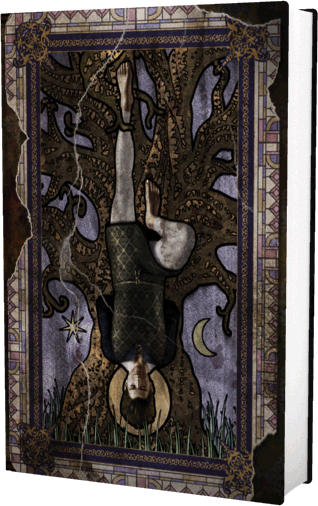
Published on October 22, 2013 14:03
October 21, 2013
coming soon from Stark House Press-Hell Hath No Fury by Charles Williams

Charles Williams: The Best Known Unknown Paperback Originalby Rick Ollerman
Is there anyone out there as justly famous yet frustratingly unavailable as Charles Williams? He wrote 22 books, worked on numerous screenplays and short stories, had most of his books translated into languages such as French, Italian, German and Spanish, and is in the top ten list of sales of all Gold Medal writers, ahead of the likes of “The King of Paperbacks” Harry Whittington and Gil Brewer. There has been only one book written about him, a Spanish biography called La tormenta y la calma (The Torment and the Calm) by Hernán Migoya (Glénat, 2001), but even that has been out of print for years.Williams’ long-time agent and friend, Don Congdon, who also represented writers like Ray Bradbury, Jack Finney and William Styron, described him as “a hard luck kind of guy. He was much better than many writers who really made it. Not that he’d ever tell you, of course. He was genuinely modest, maybe a little down on what he wrote. You could never be sure if he thought what he did was quite respectable. He was, after all, writing paperback originals, and this was still in the 1950s.”John D. MacDonald, number one on the Gold Medal sales list, said that Williams just never got that break he needed and was perhaps better than all of them, meaning the paperback original thriller writers. When sales of paperbacks began to flag at the end of the sixties, it was suggested to Williams that he write about a series character, but he thought that would be boring for him. He did give two pairs of sequels, the first narrated by a seven year old boy and was comprised of The Diamond Bikini and Uncle Sagamore and His Girls. The second, a seagoing pair written in the third person made up of Aground, and one of his most popular novels, Dead Calm, later filmed twice but only once released, with yet another version on the way.Between 1951 and 1960, he published seventeen of his twenty two novels, three more during the rest of the sixties, and his final two in the early seventies. Then, tragically, he took his own life.
(more)
In 1953, we get what many consider to be the ultimate Charles Williams book: Hell Hath No Fury, re-titled The Hot Spot in Great Britain and filmed under that name by Dennis Hopper in a fine neo-noir film starring Don Johnson, Virginia Madsen and Jennifer Connelly.In keeping with the last book, the perfect crime is exactly that, at least for a while. Williams does a wonderful job of painting a thoroughly thought out and executed crime, all from the perpetrator’s point of view, only to have a few threads gradually picked away until the entire scheme begins to unravel. Just as he does new things with each book, he carries some elements along that he’s used before.Harry Madox, as amoral as any of Williams’ male leads, has placed his neck in an irresistible noose. When he finally finds someone who makes him want to be a better man, so to speak, he’s already in too deep with his perfect crime. It comes undone much like Jack Marshall’s scheme in River Girl only this time it’s helped along by that classic noir element: the femme fatale, the woman he can’t leave alone and whose pride won’t allow it. Once she’s had him he belongs to her and she’d rather lose everything than be given up by her man. Pride overrides sin.Madox is an aimless, casual troublemaker type on the run for some minor offenses in Houston. When he meets a man in a restaurant who says he needs a salesman, Harry claims to be one and gets the job. His entire life consists of taking whatever shortcuts he can find, legal or not, and usually with whatever woman will have him at the time. This is not a long range career path for him.A fire in town changes everything. Harry conceives of a plan, foolproof of course, that will net him a lot of money and set him up for his next move, whatever that may be. But what he thinks is a casual dalliance with a (married) woman turns into something that he can’t run away from; she simply won’t let him. Harry brushes it off and goes on planning his perfect crime.There are two things he doesn’t see coming, though: he meets another woman, someone he can actually fall in love with, someone he can see himself marry and make a life with. The second thing is the focus of the other woman’s obsession.The crime comes off, though, almost without a hitch, but there’s more afoot and as Harry finally gets to the bottom of it, he sees that what he’s done is bound up with the fortunes of his new love. To help her he can’t afford to get himself caught. Unfortunately for them, together they’re firmly clutched in the grip of Harry’s femme fatale, and when she enlists the help of a local grifter, Harry and his girl have nowhere to run, and no way to get out from under unless it means going to prison for them both. Harry’s short term gain turns into a long term prison sentence of its own, a private hell that he can’t get away from.
Published on October 21, 2013 12:43
October 20, 2013
Charles Willeford’s Portrait of the Artist as a Used Car Salesman by Doug Levin
Charles Willeford's Portrait of the Artist as a Used Car Salesmanby Doug LevinNov 11, 2010 in Books , Guest PostsMullholland books
When I hit certain moments in works by Charles Willeford (1919–1988), I feel like the top of my head is going to rip right off. This is my brain teetering on the strange mental precipice that is the hallmark of Willeford’s odd and destabilizing fiction.And usually at these heady Willefordian moments, I laugh (nervously? maniacally?) as well. I’m not prone to laughter, but Charles Willeford makes me laugh.What is the source of Willeford’s idiosyncratic impact on readers—an impact that has won him devoted fans, brought his works back into print, and made him an important part of the 20th-century American crime fiction canon?In 1989, Richard Gehr. writing in the Village Voice Literary Supplement, dubbed Willeford the “Pope of Psychopulp” (making Patricia Highsmith the “Popette”?), meaning in part: (1) that Willeford has a religious following; and (2) that a special subgenre name—“Psychopulp”—is needed to contain his works.I’m not altogether crazy about the term “Psychopulp” as a description of Willeford’s content, but the word does aptly describe the effect of his works: my psyche—my psychology—is pulped as Willeford’s fiction unhinges certain bourgeois American attitudes and beliefs.I would go so far as to argue that Charles Willeford, in his best works, puts art, aesthetic sensibility, critical acumen, morality, and American ideology on a dramatic collision course. Yeah, pretty sophisticated stuff for a guy whose first novels were published by third-string soft-porn paperback houses in the 1950s. The typical Willefordian antihero is callous, corrupt, self-centered, materialistic, and violent, but also insightful, charming, and witty. And more crucially, these characters have deep artistic ambitions.for the rest go here:
http://www.mulhollandbooks.com/2010/1...
-portrait-of-the-artist-as-a-used-car-salesman/
Published on October 20, 2013 18:35
October 19, 2013
Noir on the Range – The Top Ten Anthony Mann Westerns My obsession with Anthony Mann's films continues
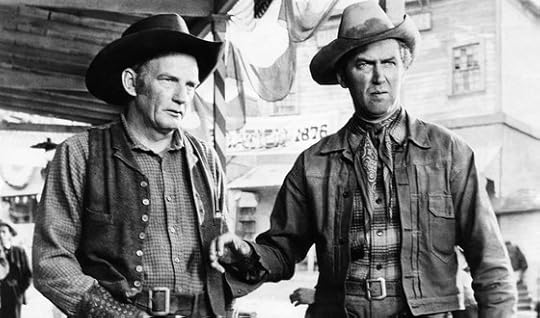
"He was less reckless than Sam Fuller, less passionate than
Nicholas Ray, yet in the framework of the Western he hit on
an almost perfect form with more consistency than either
of his peers - and fuelled it with pain." - Tom Charity (The Rough Guide to Film, 2007)
Noir on the Range – The Top Ten Anthony Mann Westerns
FromTurner Classic MoviesDirector Anthony Mann defined the cowboys of the ’50s, creating what critics dubbed the psychological Western. Taking a note from film noir, Mann’s heroes were beset by past tragedies, frustrated ambitions, and desperate to come to terms with their own torment — often by battling villains who were all too similar to themselves. A capable director in multiple genres, Mann didn’t need the Western — but the Western needed him.10. The Last Frontier (1955) Victor Mature plays a Davy Crockett-like frontiersman who signs up to fight off warring Indians. Typically, Mann adds an element of moral complication: Mature serves under a hawkish colonel whose main interest isn’t in ending the conflict — but prolonging it! While a minor work that just scratches onto this list, The Last Frontier shows that even when he’s painting with light strokes, Mann deals in more sophisticated themes than his contemporaries.9. Devil’s Doorway (1950) Mann’s first Western is even more ambitious in describing the toxic relationships between Native Americans and white-folk. Robert Taylor plays a Shoshone Indian chief who fights courageously in Gettysburg, even winning the Medal of Honor. But when the Civil War hero returns home, he find truculent whites squatting on his land. The audience is meant to root for the Indians — Mann’s boldness earns this one the ninth slot.
8. The Tin Star (1957) Here, Henry Fonda plays a typical Mann outsider. A former sheriff turned bounty hunter, he likes living on the periphery with no one to answer to but himself. But soon he gets stuck helping an effete Anthony Perkins learn some pistol skills so he can clean up a town. This one’s made of more conventional material than some of Mann’s Westerns, but it’s done so well you’ll hardly notice the shift.7. The Far Country (1954) You know the type: Solitary, introverted, doesn’t play well with others. They usually have delusions of grandeur. In The Far Country, Jimmy Stewart plays a prospector in the Klondike who doesn’t care about anyone but himself and his precious gold flakes. But will the death of a friend finally make him care about someone but himself? Part of the genius of this movie is the sheer level of unscrupulousness it allows Stewart before he changes his ways.6. The Man from Laramie (1955) Poor Jimmy Stewart suffers numerous indignities in this movie as he infiltrate a frontier town in an effort to shed light on his… shadowy past. (His efforts earn this one sixth place.) But all his sufferings only amp up the audience’s bloodlust for revenge! You don’t mess with a man’s mules (they get shot) or his shooting hand (which gets plugged at point-blank range). It’s easy to imagine fans of Mr. Smith Goes to Washington chomping at the bit for dear old Stewart to blast away the bad guys.5. The Furies (1950) This was a switch-up pitch from Mann — a lesser known work that’s also one of his most interesting. Taking its cues from Greek tragedy, The Furiesfocuses on the subtly unseemly relationship between widowed cattle-baron Walter Huston and his daughter Vance Jeffords (a typically wonderful Barbara Stanwyck). The movie’s bold Freudian symbolism and fraught familial conflicts were ahead of its time — and make this one a lock for the top five.4. Man of the West (1958) Gary Cooper puts in a great, latter-day performance in this dark, unsung Western. Like a lot of Mann’s heroes, he’s a man who’s wounded by the past. And when the past returns — in the form of his former outlaw buddy Dock Tobin (a malicious Lee J. Cobb) — he must find a way to maintain his new identity. The movie didn’t generate much enthusiasm when it was first released, but later reappraisals (Jean Luc-Godard was a huge fan) have asserted it as one of the great psychological Westerns.3. Bend of the River (1952) Stewart plays an ex-Missouri raider who’s found a new career: escorting wagon trains out West. But along the way he discovers an uncomfortable fragment of his own past: an old chum (Arthur Kennedy) who hasn’t given up his outlaw ways. Stewart saves Kennedy and invites him to join the journey, but Kennedy decides he’d rather steal the settlers’ goods for his own profit. Will Stewart go along with it? For the suspense hanging over that question, this one bends its way right into third place.2. Winchester ’73 (1950) This moody, noirish Western follows the gun of the title as it passes through many, many hands. What could have been a gimmicky frame device (see the short-lived Robert Altman TV series, Gun) becomes a powerful symbol of the history of violence that interconnects its characters and finally leads to a showdown between heavies Waco (Dan Duryea) and Lin McAdam (Stewart). For its formal daring and and crackling suspense, it’s one of Mann’s best.1. The Naked Spur (1953) Our number-one flick features Jimmy Stewart as you’ve rarely seen him — completely and utterly immoral. This is the pinnacle of Mann and Stewart’s long run together, and one of the best Westerns ever made. From start to finish it’s engaging and provocative, and Stewart’s quest, to catch an old friend for reward money, increasingly becomes not a noble mission but a crazed pursuit for money no matter what the cost.
Published on October 19, 2013 13:23
October 18, 2013
Carolyn Hart; Robert J Randisi; Ed Lauter
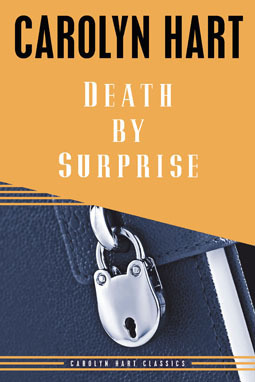
Carolyn HartWith a new introductionby the author200 pp
ISBN 978-1-61614-869-0
Paperback • $13.95
November 2013
Also available in ebook format
World Rights
A woman is out to clear her cousin of murder charges after a blackmailer targeting the wealthy Carlisle family turns up dead.
K.C. Carlisle and her cousin Kenneth Carlisle both grew up rich. Kenneth is a corporate lawyer in an exclusive Northern California seaside community while K.C. has a storefront office on the seedy side of town. She takes whatever kind of case walks in her door.
But trouble appears one day when Francine Boutelle shows up pretending she wants to write an expose of the Carlisle family, including some dirt on K.C.'s late and highly respectable father. Francine has visited most of the family and is willing to keep the family secrets in exchange for cash.When Kenneth is accused of murdering the blackmailer, K.C. is determined to prove his innocence, no matter where the trail of blood and deception leads.
"Strong, assured storytelling. A welcome trip back to classic detective stories, made fresh with a strong female voice, written at a time when women lawyers, as well as women crime novelists, were changing the way the world worked. If you're a Carolyn Hart fan and missed this the first time, rejoice! If you haven't yet discovered Carolyn Hart, oh, I envy the treats you have in store!"
—Cathy Pickens, author of the Southern Fried mysteries
Ed here:
"As a young teenager, I devoured hard-boiled private eye books along with titles by Christie, Tey, Rinehart, and Wentworth...and bought books by Erle Stanley Gardner, John Creasy, Donald Hamilton and, Jack Iams...
"Death By Surprise is as near that (hard-boiled) genre as I've ever come, K.C. Carlisle. the protagonist, is a young woman lawyer who has good reason never to quite trust anyone."
You can find these words in Carolyn Hart's introduction to this fine mystery novel. In terms of basic English it's a hoot because it's so much fun listening to Carolyn try out a new voice. Sometimes she's pure hardboiled:
"Joe Solomon looks like an overstuffed lizard. His skin is yellowish and uhealthy. He eyes are thick-lidded, giving him a Mongollian aspect."
But then she's upper-crust snarky:
"It was a debutante ball and a typical one. The girls all in white, which always amused me, danced the first dance with their fathers."
Death By Surprise is not only not only a fine mystery it's also in basic English--booth a hoot at times and a dark, compelling look at the shady business of gossip magazines."
Ed here:
----------------------------------------------------------------------------------
ROBERT J. RANDISI
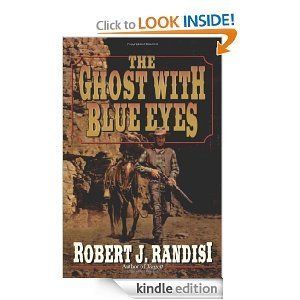
I admire this novel so much I place it second only to Bob's (as a western writer) masterpiece THE HAM REPORTER.
This has the lean power of Elmore Leonard's westerns. It has surprise, shock and heartbreak.
Here's what Publisher's Weekly had to say about it:
Randisi's (Targett) short but intense western delivers exciting plot in spare, exacting prose. After the gunfighter known only as Lancaster turns down a $10,000 offer to kill a man (Lancaster provides protection but he's not a killer-for-hire), he is forced into a gunfight with his would-be target, with tragic results: Lancaster accidentally kills a six-year-old girl. Haunted by the memory of the girl's vivid blue eyes, Lancaster moves to another town, where he gives up the gun and becomes the town drunk. But fate steps in to change his life once again when he meets nine-year-old Alicia and her mother, who are on the run from Alicia's abusive father, rich and powerful Aaron Delaware. Alicia's mother is killed by one of Delaware's hired guns and Delaware arrives to claim his daughter, but Lancaster comes to the rescue and takes Alicia to the best person he can think of to care for her--the mother of the girl he killed. Readers will experience the pleasures found in old ""B"" Westerns: the simple (but not simplistic) moral opposition between good and evil and the inspiration of personal redemption. (Aug.)
Ed Lauter:
ED LAUTER, ACCLAIMED CHARACTER ACTOR, DEAD AT 74
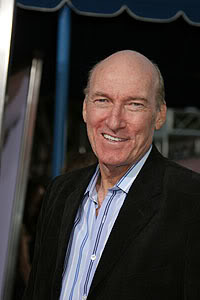
ou know Ed Lauter, even if you don't recall his name.The veteran character actor, who appeared in countless movies and TV shows for more than four decades but is perhaps best known for roles in 1974's The Longest Yard, 1976's Family Plot and more recentlyThe Artist, has died.He was 74.A family spokesman told the Los Angeles Times that Lauter passed away at his home in Los Angeles Wednesday after battling mesothelioma, a rare form of cancer commonly caused by asbestos that affects tissue covering the body's internal organs.In The Longest Yard, Lauter played Wilhelm Knauer, the prison guard captain and coach of a gaggle of football-playing inmates who torments Burt Reynolds' character until the latter helps coach and ultimately quarterback their team to a championship. NEWS: Cory Monteith dead at 31


 He memorably appeared in Alfred Hitchcock's final film,Family Plot, alongside Bruce Dern and Karen Black. He impressed the master of suspense so much that Hitchcock tapped him for a major part in his next movie,That Short Night. But the project was scrapped due to Hitch's failing health and eventual death.Other notable '70s flicks the thesp acted in included 1975's French Connection II, 1976's King Kong, along with the 1978 TV miniseries How the West Was Won, and guest shots on such tube series as Charlie's Angels, The Rockford Files, and Hawaii Five-O.Known for his bald pate and stern demeanor, throughout his career Lauter played a series of authority figures and villains including generals, policemen, mobsters and fathers and was in demand right up until his death.
NEWS: Hollywood remembers Larry Hagman
Gen Xers will recall, for instance, Lauter's tough-as-nails turn as
Rob Lowe
and
Patrick Swayze
's hockey coach in 1986's Youngblood as well as stints in 1989's Born on the Fourth of July and scores of '80s TV classics including The A-Team, Magnum P.I., Murder She Wrote and The Equalizer, among others.Lauter's '90s output was no different with a recurring role in ER as Fire Captain Dannaker and appearances in The X-Files, Homicide: Life on the Street and such films as 1990s' My Blue Heaven, 1991's The Rocketeer, 1992's School Ties and 1995's Leaving Las Vegas.The 2000s saw him appear in Thirteen Days opposite
Kevin Costner
, Seabiscuit with
Jeff Bridges
, and Trouble With the Curve, in which he played a baseball scout and friend of
Clint Eastwood
's character. But perhaps his most celebrated film is one where he didn't say a word—playing Peppy's Butler in 2011's Best Picture winner The Artist.
NEWS: Masterchef finalist Josh Marks found dead
He memorably appeared in Alfred Hitchcock's final film,Family Plot, alongside Bruce Dern and Karen Black. He impressed the master of suspense so much that Hitchcock tapped him for a major part in his next movie,That Short Night. But the project was scrapped due to Hitch's failing health and eventual death.Other notable '70s flicks the thesp acted in included 1975's French Connection II, 1976's King Kong, along with the 1978 TV miniseries How the West Was Won, and guest shots on such tube series as Charlie's Angels, The Rockford Files, and Hawaii Five-O.Known for his bald pate and stern demeanor, throughout his career Lauter played a series of authority figures and villains including generals, policemen, mobsters and fathers and was in demand right up until his death.
NEWS: Hollywood remembers Larry Hagman
Gen Xers will recall, for instance, Lauter's tough-as-nails turn as
Rob Lowe
and
Patrick Swayze
's hockey coach in 1986's Youngblood as well as stints in 1989's Born on the Fourth of July and scores of '80s TV classics including The A-Team, Magnum P.I., Murder She Wrote and The Equalizer, among others.Lauter's '90s output was no different with a recurring role in ER as Fire Captain Dannaker and appearances in The X-Files, Homicide: Life on the Street and such films as 1990s' My Blue Heaven, 1991's The Rocketeer, 1992's School Ties and 1995's Leaving Las Vegas.The 2000s saw him appear in Thirteen Days opposite
Kevin Costner
, Seabiscuit with
Jeff Bridges
, and Trouble With the Curve, in which he played a baseball scout and friend of
Clint Eastwood
's character. But perhaps his most celebrated film is one where he didn't say a word—playing Peppy's Butler in 2011's Best Picture winner The Artist.
NEWS: Masterchef finalist Josh Marks found dead
 Upon learning of his passing, Lowe paid tribute to the Hollywood vet on Twitter."Sad to hear of Ed Lauter passing. Great actor and nice man. Goodbye, coach.#Youngblood," he tweeted.His Seasbiscuit costar,
Elizabeth Banks
, also mourned him."Very sad to hear of the passing of Ed Lauter. Worked with him on "Seabiscuit". Wonderful actor, wonderful man," she added.
NEWS: Green Mile star Michael Clarke Duncan dead at 54
Before his death, Lauter had several films in the can. And last year in an interview with theTimes, he expressed satisfaction at having flourished in such a tough industry."A lot of people say, 'I know you,' but they don't know my name," Lauter told the Times last year. "But I've had a great run."No word yet on funeral plans.
PHOTOS: Here are some other stars we've lost this year
Upon learning of his passing, Lowe paid tribute to the Hollywood vet on Twitter."Sad to hear of Ed Lauter passing. Great actor and nice man. Goodbye, coach.#Youngblood," he tweeted.His Seasbiscuit costar,
Elizabeth Banks
, also mourned him."Very sad to hear of the passing of Ed Lauter. Worked with him on "Seabiscuit". Wonderful actor, wonderful man," she added.
NEWS: Green Mile star Michael Clarke Duncan dead at 54
Before his death, Lauter had several films in the can. And last year in an interview with theTimes, he expressed satisfaction at having flourished in such a tough industry."A lot of people say, 'I know you,' but they don't know my name," Lauter told the Times last year. "But I've had a great run."No word yet on funeral plans.
PHOTOS: Here are some other stars we've lost this year
Published on October 18, 2013 12:55
October 17, 2013
Movies RAW DEAL reviewed by Alan Fish
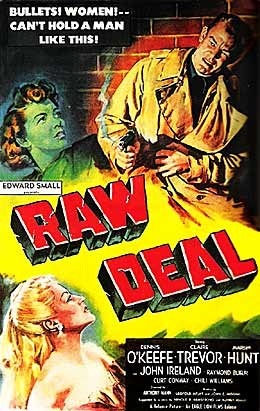
Raw Deal – 1948, Anthony MannJuly 27, 2010 by wondersinthedarkby Allan Fishthe first in a series of six pieces on the classics of Anthony Mann…a one off to accompany Sam’s piece on Mann.(USA 1948 78m) DVD1A whole tidy little pile of rocksp Edward Small d Anthony Mann w Leopold Atlas, John C.Higgins story Arnold B.Armstrong, Audrey Ashley ph John Alton ed Alfred de Gaetano m Paul Sawtell art Edward L.Ilou Dennis O’Keefe (Joe Sullivan), Claire Trevor (Pat Cameron), Marsha Hunt (Ann Martin), Raymond Burr (Rick Coyle), John Ireland (Fantail), Curt Conway (Spider), Chili Williams (Marcy), Regis Toomey (Capt.Fields), Harry Tyler (Oscar), Whit Bissell (murderer),I can’t remember who coined the term ‘termite art’ to describe the ‘B’ movie classics churned out on the cheap in Hollywood in the forties. Edgar G.Ulmer was probably the most famous exponent, but Anthony Mann deserves a mention, too. Easy to forget that, prior to his reinvention of the western as a psychological landscape as much as a physical, Mann also stamped his mark on the noir world. Desperate, T-Men, Side Street, even an uncredited stint on He Walked by Night. All decent films, yet lacking that authentic grit; Raw Deal was rather a film like the identities faked by Itzhak Stern and co. in Schindler’s List, they were too new, they needed tearing, crunching up, having coffee spilt on them to add that sense of having been places. Raw Deal had it in spades, not on the surface where you could easily spot it, but in the hidden corners, the searchlights at the prison, the smell of the flambé Burr’s suited villain tosses into some poor girl’s face, the musky smell in the room where two characters fight it out in the dark. Joe Sullivan is a typical noir sort of hero, born with a toy eight ball hovering over his pram, through orphanages and scrapes, one after the other, and then being told to take the rap for kingpin Rick Coyle. He thinks Rick’s on the level when he sends his beloved Pat to tell him of a break out. Pat only thinks of Joe’s escape. Rick, however, is rolling the dice, assuming that Joe will get killed in the escape attempt. Needless to say he doesn’t, or else bang goes our film, and as Joe gets closer to his assignation with Rick, so he gets further into a mire in which struggling is futile and death is written. for the rest go here:
http://wondersinthedark.wordpress.com...
Published on October 17, 2013 11:40
October 15, 2013
Pro-File: Shirley Kennett`
[image error]
1. Tell us about your current novel or project.
I’m juggling several projects right now, in different genres.
My PJ Gray series of suspense books has been given new exposure as e-books and audio books. These are the foundation of my writing career, and I’m pleased that they’re selling well in their new formats. PJ Gray is a psychologist who works for the St. Louis Police Department developing virtual reality crime recreations. A bit ahead of their time when they were first published, the PJ Gray books now have police technology in the real world beginning to catch up with their concepts. Detective Leo Schultz is PJ’s partner. I published a short story, “Calamity,” extrapolating Schultz into a P.I. career. It was enjoyable to write and made the first cut for a Thriller Award, until I had to pull the story out of competition. I was a board member of International Thriller Writers at the time, and board members can’t win anything. Drat. The first line of the story was, “My Goodwill couch had never cradled such a luscious ass in its long and tacky history.” What fun! It was the first time I’d written in first person, and I found out I liked it and don’t know why I avoided it for years. I’m planning a story collection for P.I. Schultz, bringing one of my first series characters into his own spotlight.
Honor’s Journey, historical fiction for middle grade students, has just been self-published under the pen name of DB Ayers, which I’m using for children’s and YA books. It has a literary tone, unlike my other writing that is so commercial it might as well have dollar signs instead of page numbers. It has an interesting background in that I brainstormed the book with fifth grade classes when I was invited into schools to speak on “What an Author Does.” I couldn’t talk about my published books, since they are all R-rated, so I came up with the idea of taking the kids through a brainstorming session for a novel on their own reading level. The result of all those sessions was such a good story I couldn’t resist writing it. I already know my target audience goes for it, too. How often does that opportunity come along for a writer?
I have a proposal for a Young Adult science fiction trilogy, Aftermath, with my agent, who has submitted it to major houses. Three Hollywood production companies are reviewing it, too, which produces a heady feeling but nothing solid to talk about. It’s a treat while it lasts, though.
2. Can you give us a sense of what you’re working on now?
I’m just getting started on the fourth book in my Mortal Path series (written as Dakota Banks), a story about a woman who sold her soul to an ancient demon three hundred years ago and now is working to earn it back. It’s paranormal without any of the usual vampires, werewolves, witches, etc., and is based on Sumerian mythology brought forward to the present. After the first three books, the publisher wanted to switch to e-book only (a lot of paranormal series were following that path), and I said no thanks. Why did I need a publisher involved to do that? I could do it myself for higher royalties. So I put it aside for a while to work on the other projects above, and something I hadn’t expected happened. I started getting email asking when the next book was coming out. A lot of email, enough to swell my head. I have a synopsis for the book, Bloodletting, and the cover art finished, something I very much enjoy doing.
3. What is the greatest pleasure of a writing career?
I’m sure every writer has a something different to talk about here. For me, without a doubt, it’s the freedom to create and explore other worlds while sitting at my desk. With science fiction or paranormal, the need for world creation is more obvious, but even in crime novels, each book has a world slice: a piece of our world closely examined, its inhabitants fully in tune with it (or not), its morals, and the ways and degrees to which its laws are bent. When story, characters, and world meld perfectly, it’s magic. That’s the greatest pleasure—those quiet, magic moments that light up a novel like a string of Christmas lights.
4. The greatest displeasure?
The business aspect of a writing career is uncertain and intrusive. I’d like to be left alone to write and not have to worry about contracts, promotion, and Twitter. It would be good if a monthly salary would fall on me, hard and regularly, as it did when I worked as a corporate manager. Then again, there were a lot of strings attached to that.
5. Advice to the publishing world?
To publishers: Get real about e-book royalties. Big houses usually pay 25%; writers can easily get 70% through self-publishing. Either increase royalties or offer value-added services, like meaningful promotion.
To writers: You’re going to need a strong love of writing to keep you going in this field. You will leave your blood, sweat, coffee, and tears on the pages. If you don’t, what you write won’t be worth reading.
6. Are there any forgotten writers you’d like to see in print again?
I’m going to transform this question into “any under-recognized writers I’d like to see become popular?” Glad you asked! Jo Hiestand (http://www.johiestand.com) writes wonderful English mysteries. She has two series going. The team of Detective-Sergeant Brenna Taylor and her boss, Detective-Chief Inspector Geoffrey Graham solve mysteries when British customs run amuck in small villages; ex-police detective Michael McLaren investigates cold cases on his own. Her writing is lyrical, filled with descriptions of the natural world woven into the stories, has plenty of twists and turns, and does it right as far as British police procedures go. These are traditional mysteries with a touch of gore, not cozies. Jo has fifteen novels and a non-fiction book about British customs published. Her work deserves a far wider audience. If you or someone you know enjoys British police procedurals, give Jo’s books a try. Yes, she’s a friend of mine.
7. Tell us about selling your first novel.
I didn’t sell my first novel at the time I wrote it. I wrote my first novel, Burning Rose, to enter into a contest. Having a deadline was a great motivator, and the $10,000 prize would look good in my bank account. I was convinced I was going to win the prize, and when I didn’t, I sulked and figured I wasn’t meant to be a writer. Six months went by, and of course I was no closer to being a published author. The solution? I decided I needed an agent. I wrote ten query letters to agents, got three requests for the full manuscript, and had an agent within a month. Again, elation. Then time passed and Burning Rose didn’t sell. It had been written by the seat of my pants, and I have found out since then that doesn’t work for me. I had only written short stories prior to attempting my first novel, and short stories I could handle without a lot of planning. Not so for a novel-length project.
With Burning Rose in my rear-view mirror, I started planning a crime series, developing the characters and the world-slice in which they operated. Then I wrote Gray Matter, the first book in the PJ Gray series, in one page, then expanded it to ten pages. I had a synopsis, a guide for my writing. Not that I stuck to it completely, but I had a beginning, and end, and some great stuff for the middle. I didn’t feel confined by the synopsis. There was plenty of room for creativity in the process of turning ten pages into a four-hundred-page manuscript. I had a technique that worked for me. Three weeks after turning in the manuscript to my agent, I had a two-book contract to start the series.
I came back a while later and took a look at the Burning Rose manuscript. Couldn’t believe I wrote that crap! It was a good thing it didn’t get published. I rewrote it and it was published as my fifth novel.
[image error] [image error] [image error]
Published on October 15, 2013 12:51
October 14, 2013
A free gratis Charlie Stella short story
A Charlie Stella short story?Okay, amici ... a Charlie Stella short story I was gonna submit to some contest until I saw there was a fee. Listen to me: it’s tough enough getting paid to write, I’m gonna pay to write? Not in this life, MF'ers. Well, not anymore.So, without further ado ...
http://temporaryknucksline.blogspot.c...
Published on October 14, 2013 14:46
review Renegade byJ.A. Souder
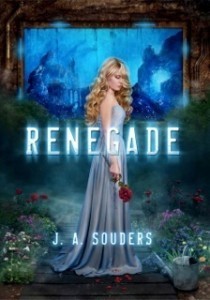
Having grown up on "Aquaman" and Henry Kuttner's fine novel Fury I was eager to see how a writer from a far different generation handled the the trope of an underwater world.
J.A. Souder not only honors but enriches this this particular trope with her Young Adult novel Renegade. Groomed to be the leader of Elysium, raised in a realm so perfect anything else is unimaginable, young Evelyn Winters can't believe what the real Elysium is explained to her.
Souder's storyline is filled with constant tension and surprise. About mid-point I made the mistake of thinking I knew where she was going. She's way too talented for that.
The world building here is masterful as is the color and pacing when young about-to-be-leader becomes the Renegade of the title. Souder to manages to create a young woman as complex as the world she inhabits so that what might have been a routine chase novel becomes an expertly written character study as well.
Publisher: Tor Teen
Publication Date: November 2012
Hardcover: 364 Pages
Published on October 14, 2013 14:34
Ed Gorman's Blog
- Ed Gorman's profile
- 118 followers
Ed Gorman isn't a Goodreads Author
(yet),
but they
do have a blog,
so here are some recent posts imported from
their feed.



